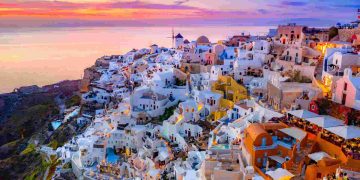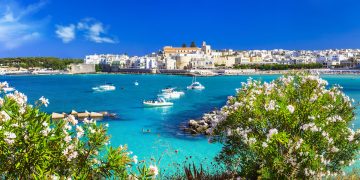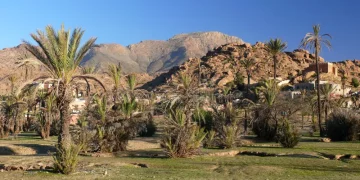Introduction
In recent years, Vietnam has seen a steady rise in tourism, with cities like Hanoi, Ho Chi Minh City, and Ha Long Bay traditionally taking the spotlight. However, a new star is emerging on the horizon of Southeast Asia’s travel scene—Da Nang. Once a quiet coastal city, Da Nang is now rapidly transforming into one of the most sought-after tourist destinations in Vietnam and Southeast Asia as a whole. From its pristine beaches and cultural heritage to modern infrastructure and strategic location, Da Nang is quickly becoming a major player on the region’s tourism map.
But what exactly makes Da Nang so appealing to the modern traveler? In this article, we will explore the factors driving Da Nang’s rapid rise, why it has become a favorite for both international tourists and local travelers, and how the city is positioning itself as the new hotspot for Southeast Asia.
The Perfect Location: A Gateway to Central Vietnam
Da Nang’s geographical location is one of its key advantages. Situated in central Vietnam, it acts as a convenient gateway to some of the country’s most iconic destinations, making it an ideal base for exploring the region. The city is:
- Close to Historic Hoi An: Just 30 kilometers south of Da Nang lies the UNESCO World Heritage site of Hoi An, famous for its ancient town, charming streets, and well-preserved architecture. Hoi An is known for its romantic atmosphere, lantern-lit streets, and incredible food scene. The proximity between Da Nang and Hoi An allows travelers to experience both the modern and the historical aspects of Vietnam in one trip.
- Near the Ancient Imperial City of Hue: Located roughly 100 kilometers to the north, Hue is another UNESCO World Heritage site known for its ancient citadels, temples, and tombs. With its fascinating imperial history, Hue adds another layer of cultural depth to Da Nang’s offerings.
- Access to Marble Mountains and Ba Na Hills: Da Nang is home to natural landmarks like the Marble Mountains, a cluster of five marble and limestone hills offering beautiful hiking routes, caves, and panoramic views. Further, Ba Na Hills, famous for its Golden Bridge (the “Hands Bridge”), has become one of Vietnam’s most Instagrammable spots, drawing tourists with its stunning views and surreal architecture.
This strategic location not only makes Da Nang an easy base for tourists, but also offers them a chance to experience the diversity of Vietnam’s culture, history, and nature within a small geographic radius.
Stunning Beaches and Resort Development
Da Nang is often considered the beach capital of central Vietnam due to its beautiful coastline. The city boasts some of the finest beaches in the country, with long stretches of golden sand, clear turquoise waters, and gentle waves. Here are some of the most attractive beach destinations in Da Nang:
- My Khe Beach: One of the most famous beaches in Da Nang, My Khe Beach is known for its soft sand, clean waters, and laid-back atmosphere. The beach is perfect for swimming, sunbathing, and water sports, and is just a short drive from the city center.
- Non Nuoc Beach: Located near the Marble Mountains, Non Nuoc Beach is quieter and more secluded. It offers a serene setting for relaxation, and its proximity to cultural attractions makes it an ideal spot for tourists seeking both nature and history.
- Luxury Resorts and Hotels: In recent years, the city has seen significant investment in luxury resorts and hotels, many of which are located along the coastline. International hotel chains like InterContinental, Furama, and Novotel have established a presence in Da Nang, elevating its status as a high-end beach destination. The development of beach resorts has attracted a growing number of international visitors, especially those seeking a blend of relaxation and cultural exploration.
Infrastructure and Accessibility: Da Nang’s Urban Growth
Da Nang has made substantial strides in modernizing its infrastructure, making it a more convenient and attractive destination for tourists. Some of the key developments include:
- International Airport: Da Nang International Airport has become one of the busiest airports in Vietnam, with direct flights from major international hubs such as Bangkok, Seoul, Singapore, and Kuala Lumpur. The airport’s expansion plans suggest a continued increase in international arrivals, further boosting the city’s tourism appeal.
- Improved Roads and Transportation: Da Nang has invested heavily in upgrading its transport network. New roads, bridges, and public transportation systems make it easier to travel around the city and connect to nearby destinations like Hoi An and Hue. The development of the Da Nang – Quang Ngai Expressway also significantly reduces travel time to other key cities in the region.
- Smart City Initiatives: As part of its efforts to become a modern metropolis, Da Nang is focusing on implementing smart city technologies. These innovations are aimed at improving the urban experience for both residents and tourists, with things like free Wi-Fi zones, enhanced safety measures, and digital tourism services becoming increasingly common.
A Blend of Modernity and Culture
While Da Nang is rapidly developing, it has managed to maintain a balance between modernity and tradition. The city has a rich cultural heritage that is deeply embedded in its daily life. Key cultural attractions include:
- The Cham Museum: This museum showcases the art and history of the Cham civilization, which thrived in central and southern Vietnam between the 7th and 15th centuries. The museum houses a unique collection of Cham artifacts, including sculptures, statues, and carvings, which provide insight into the region’s ancient history.
- Dragon Bridge: One of Da Nang’s most iconic landmarks, the Dragon Bridge spans the Han River and features a magnificent design shaped like a dragon. In the evening, the bridge is lit up with colorful lights and even breathes fire on weekend nights, making it a must-see for visitors.
- Traditional Markets: Da Nang’s local markets, such as Con Market and Han Market, offer visitors a taste of local life, with fresh seafood, handmade goods, and local produce on display. These markets give tourists an opportunity to interact with the local community and learn about Da Nang’s culinary culture.

Rising Popularity Among International Tourists
Da Nang’s rise to prominence is partly driven by the increasing number of international tourists flocking to the city. In addition to its natural beauty and rich culture, Da Nang has become a popular destination for:
- Budget Travelers: With affordable accommodation options, delicious local cuisine, and budget-friendly activities, Da Nang appeals to budget-conscious travelers. Vietnam is known for its reasonable prices, and Da Nang offers high-quality experiences without the high price tags of cities like Hanoi or Ho Chi Minh City.
- Adventure and Nature Seekers: Da Nang is an ideal destination for outdoor enthusiasts. The city’s surrounding natural beauty offers a wide range of activities, from hiking in the Marble Mountains to ziplining in Ba Na Hills. Its coastline also provides opportunities for water sports, including surfing, snorkeling, and scuba diving.
- MICE Tourism: Da Nang has positioned itself as an attractive location for Meetings, Incentives, Conferences, and Exhibitions (MICE) tourism. The development of large conference centers and event venues has made the city a prime choice for international business events, further contributing to its increasing international profile.
Challenges and Future Growth
While Da Nang’s rapid rise is impressive, there are challenges that come with growth. Over-tourism, if not managed properly, could lead to environmental degradation and the loss of the city’s unique character. Sustainable tourism practices, preservation of natural landmarks, and community involvement will be crucial to ensuring that Da Nang’s growth benefits both visitors and locals.
Additionally, as the city continues to develop, there is a need to balance modern urbanization with the preservation of its cultural and historical assets. Striking this balance will be key to maintaining Da Nang’s appeal as a destination that offers both contemporary luxuries and authentic experiences.
Conclusion
Da Nang’s meteoric rise as a Southeast Asian tourism hotspot can be attributed to its perfect blend of natural beauty, cultural heritage, modern infrastructure, and affordability. Positioned as a gateway to the heart of Vietnam, with easy access to historical towns like Hoi An and Hue, as well as luxury resorts and pristine beaches, Da Nang is quickly becoming a must-visit destination in Southeast Asia.
As the city continues to develop and attract more international visitors, it has the potential to become one of the region’s most important and beloved tourist destinations—without losing the charm and authenticity that make it so special today. With its strategic location, incredible landscapes, and growing global recognition, Da Nang is undoubtedly poised for a bright future as one of Southeast Asia’s emerging tourism gems.





















